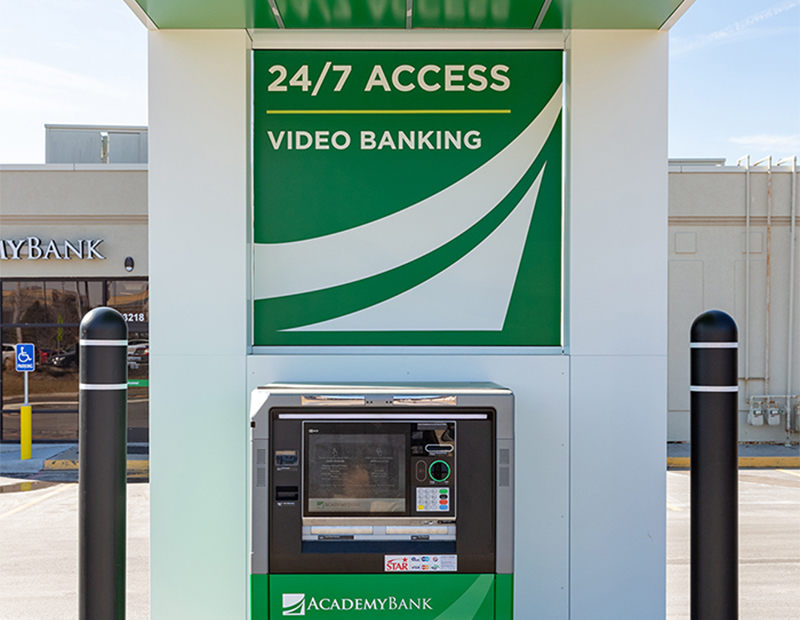Q&A: How Banking is Following Retail in Offering New Experiences
Academy Bank CEO Paul Holewinski explains how technology transformed the banking experience and why clients are quick to adopt digital tools.
Banks are now experimenting with new tech-enabled retail formats designed to meet clients’ changing needs. Last month, Chase opened a first-of-its-kind branch in Harlem that includes a custom lab for digital innovation, as well as events, workshops and localized art. The community-inspired branch model will be replicated in six other cities next year, including Los Angeles and Chicago.
READ ALSO: How Big Data, Machine Learning are Shaping CRE Finance
Citibank is also expanding its Citigold lounges across top markets like San Francisco and Miami. These banking centers offer the latest in Citi’s smart banking technology, including new online workbench terminals that enhance side-by-side interactions with personal bankers, while providing in-branch access to the digital banking platform.
Academy Bank also opened a flagship banking center in Kansas City that offers walk-up video banking. Last month, the bank announced its innovative drive-thru video banking and ATM service—Academy Express—in the city’s Crossroads Arts District. The new offering targets the bank’s retail and business clients. Paul Holewinski, CEO of Academy Bank, discussed the story behind the organization’s investment in tech and how it overcame implementation challenges.
How has technology transformed banking so far?
Holewinski: Technology has been playing an important role in transforming banking for many years. ATMs allowed quicker access to cash, while the development of mobile banking provided customers with, among other things, instant access to view and transfer balances and the ability to deposit checks remotely. Payment options like Venmo and PayPal will continue to accelerate and may eventually eliminate paper checks.
I think that the greatest strides are yet to come with technology and automation in banking. Artificial intelligence has great operational, service and sales opportunities—chatbots, blockchain, various fintech startups etc. all have great banking potential. I believe continuing technological advances in banking will derive from experiences that customers have through everyday interactions with consumer companies such as Amazon, Apple, Facebook etc.
What are the biggest challenges in adopting new technologies and how are you overcoming them?
Holewinski: One of our initial concerns was if our clients would adopt the technology and be comfortable speaking to a banker on screen vs. over the teller line. We analyzed this question repeatedly, and ultimately it was our associates that came up with the solution that drove client adoption. We explained to our branch teams that the addition of smart ATMs and interactive teller machines into our banking centers would allow us to reduce lines and wait times, improve client experience and free up their time for higher value sales and service inquiries.
The team understood the goals and put in place individual education and adoption plans at their banking centers with a focus on demonstrating to the client how to use the machines, so the client became comfortable with the new technology. Once this education process was in place, the adoption quickly followed as clients began to see the benefits.
Academy Bank offers walk-up video banking to its customers in Kansas City. Is this available in other offices, in other cities as well? Where exactly?
Holewinski: Yes. While we started our rollout of video banking ITMs and Academy Express drive-ups in Kansas City, we brought this concept of partnering high tech with high-touch service to our markets in Arizona and Colorado as well.
Tell us about the strategy behind Academy’s adoption of video banking and drive-thru video banking. How did this improve business?
Holewinski: The strategy was developed as a way to improve drive-thru and teller line efficiencies by automating more routine transactions—thereby reducing wait times and freeing up our bankers for higher value sales and service. As we began to implement the strategy, we also discovered that it was a great way to leverage highly visible real estate. The bank could operate in a smaller footprint since less space was needed to conduct branch business.
The technology also allowed Academy to cut the cord with drive-up tubes and instead create the Academy Express drive-ups that are in essence detached drive-thrus that are not required to be attached to a branch. Instead our video bankers are all centralized in our Kansas City headquarters serving our entire footprint of ITMs. This real estate flexibility with Academy Express has enabled the bank to locate across the metro, which has added seven-day-a-week (including expanded evening hours) banking for our clients with the added benefit of building the Academy brand.
How did customers react to these services? Tell us about their feedback.
Holewinski: Our clients love it. Adoption has been fast. It is a fast, easy and personal way to conduct banking, and again, because our video bankers are centralized, it allows us to provide seven-day-a-week banking across our entire platform. When the bank’s Facebook page advertised its first Academy Express, clients immediately commented by asking when we would open more locations. Clients have also managed to develop strong business relationships with their favorite tellers through the video screen. Overall, it is a great benefit for clients.
Tell us about the role of digital banking in growing your mortgage business and your real estate customers portfolio.
Holewinski: To this point, digital banking has been primarily used at Academy by our retail clients. In all of our new banking centers, however, we have installed a client engagement room that allows a client to be connected via video to a mortgage officer or a commercial banker if he/she wants to meet with someone about a loan. Most of our mortgage business is already handled electronically. Our clients start their application on a computer or mobile device, upload required documents via a customized portal and ultimately sign the documents with an electronic signature. Some clients conversely prefer the traditional approach of meeting face to face with a mortgage lender. It is another way we are leveraging video technology to bring together people for face-to-face conversations.
What can you tell us about returns when it comes to investing in smart banking?
Holewinski: Like all capital investment, it takes a little bit of time to recoup your investment and generate an ROI. Academy’s adoption of smart ATMs and ITMs has transformed our approach to retail banking and has given us the opportunity to improve our service delivery with expanded hours.










You must be logged in to post a comment.